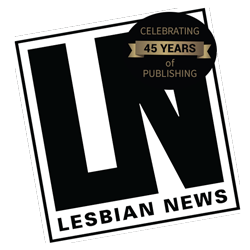
Combating the different lesbian stereotypes
The rise of anti-LGBT+ legislation, particularly the infamous “Don’t Say Gay” bill that affects queer educators and youth, has highlighted the return to mainstream the harmful lesbian stereotypes and anti-queer rhetoric.
Already, such rhetoric is being used by supporters of anti-queer legislation to return to the outdated idea that queer persons are inherently sexual deviants.
For example, the press secretary for Florida Gov. Ron DeSantis tweeted that anyone who opposes the “Don’t Say Gay” bill “is probably a groomer.”
Lesbians have specific stereotypes used against them, born from the unique intersection of misogyny and homophobia they face, known as lesbophobia.
Common lesbian stereotypes and myths
One common myth is that all lesbians present “masculinely” and this is used to other gender-nonconforming lesbians while erasing and discrediting femininely presenting lesbians.
In truth, one’s lesbian identity is not defined by appearance.
Another myth is that you cannot be sure of being a lesbian without dating men first. There are many paths to discovering one’s identity, and all of them are valid.
Lesbians should not be expected to discover and prove their queerness through experimentation, just as straight women are not expected to become involved with other women first to prove that they are heterosexual.
However, prior involvement with men also doesn’t invalidate your lesbian identity.
Lesbian stereotypes can also harm other sapphic women. For example, two persons in a female-female relationship are not automatically lesbian.
This erases other sexualities that fall under the WLW umbrella, such as bisexual, pansexual, etc., who often have their queerness discredited for involving men.
Since the experiences of lesbians and other WLW are all unique, it’s important to recognize their differences just as it is important to find solidarity in their similarities.
Lesbian fetishization and oversexualization
Another problem lesbians uniquely suffer from is fetishization, particularly under the cisheterosexual male gaze.
Generally, all queer people have historically faced discrimination related to being seen as sexually deviant, dirty, or perverted.
For lesbians, this is compounded by the sexual objectification faced by women.
This can be seen in how “lesbian” is a popular category on pornography sites, with the vast majority of this explicit content being made to appeal to cisheterosexual men instead of actual lesbians.
The fetishization lesbians experience makes them highly vulnerable to sexual violence.
This was perfectly illustrated by a 2019 case wherein a lesbian couple was brutally attacked by a group of boys that had initially been harassing them to kiss.
There is even a specific hate crime called corrective rape, wherein rape is used to punish and “cure” people for their LGBT+ identity, that lesbians are often victims of.

